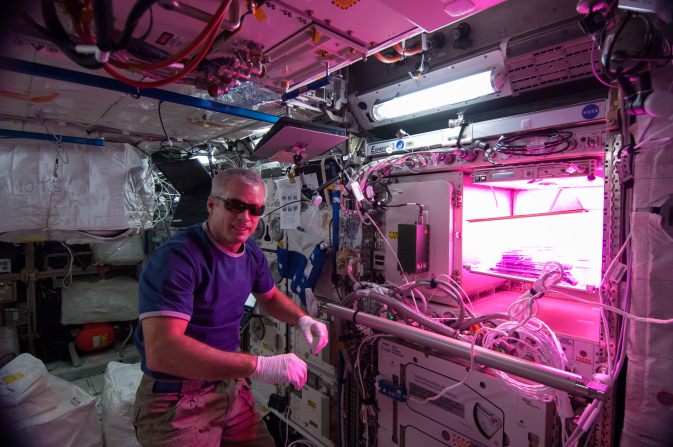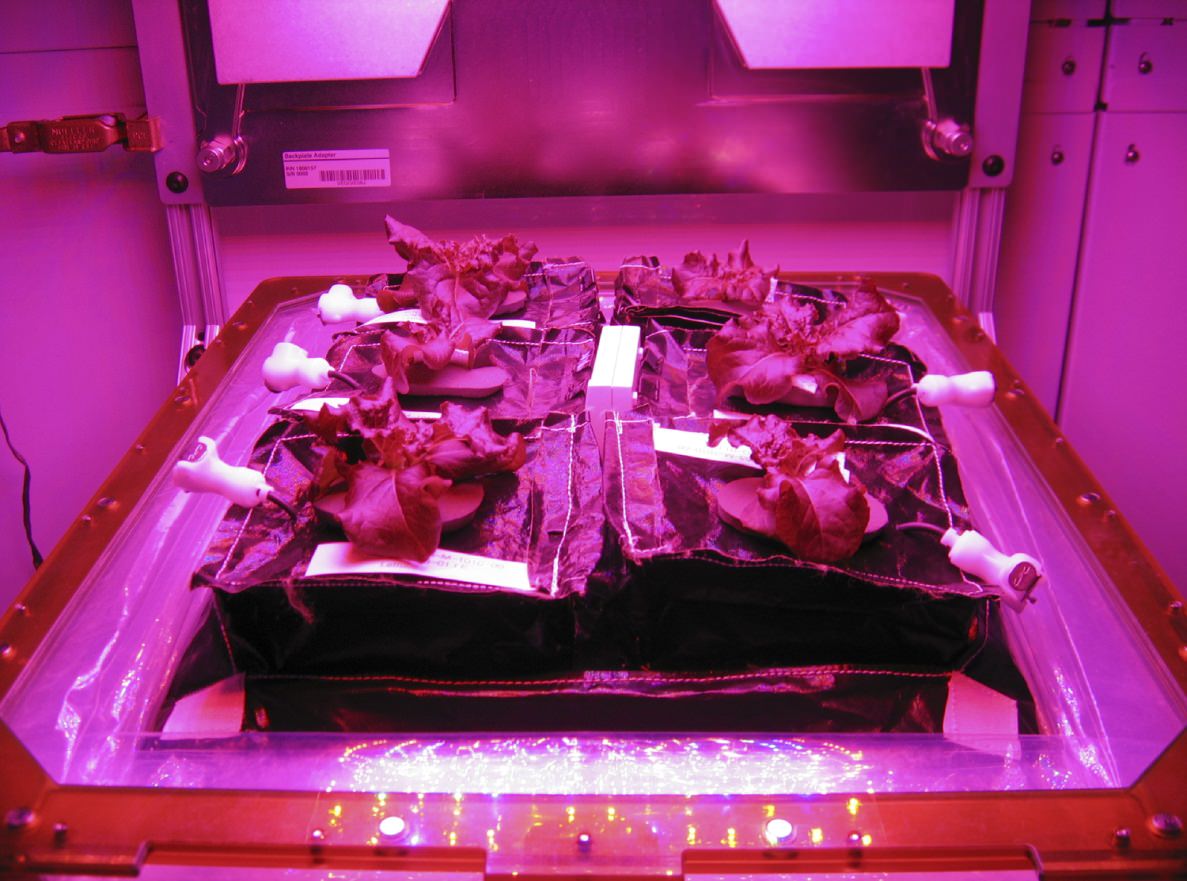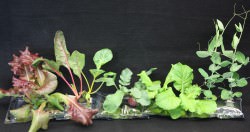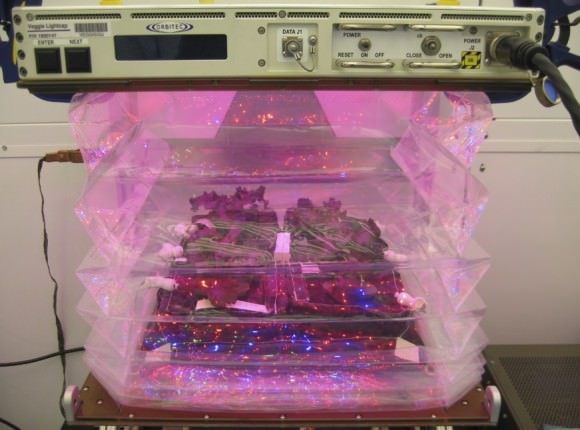In what could become the world’s first orbiting salad bar, NASA’s Veggie experiment was initiated on May 8 after a successful (if slightly delayed) launch to the Space Station on Friday, April 18 aboard a SpaceX Dragon capsule. In development for several years, the LED-powered plant growth experiment is finally getting the chance to put down its roots.
After receiving the experiment on Sunday, April 20, Expedition 39 astronauts Rick Mastracchio and Steve Swanson installed the Veg-01 unit inside ESA’s Columbus module on May 7. The next day Veg-01 was turned on, with a root mat and six small pillows containing “Outredgeous” romaine lettuce seeds within a special fertilized clay inserted inside its collapsible Teflon bellows.
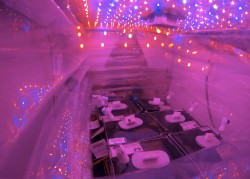
The lettuce plants are scheduled to grow for 28 days, during which time they will be periodically photographed, watered, and tested for any microbial growth. The pillows will be thinned down to one plant each, and after the experiment is over the remaining lettuce leaves will be harvested and frozen to be returned to Earth aboard another Dragon capsule later this year. There they’ll be tested and compared with the results of an identical Veggie experiment that’s being conducted at the same time at Kennedy Space Center.
If all goes well, the lettuce will be found to be safe for astronauts to eat. While they await the results, the next experiment can be started.
“My hopes are that Veggie will eventually enable the crew to regularly grow and consume fresh vegetables,” said Dr. Gioia Massa, the NASA science team lead for Veggie.
In addition to providing healthy food, having living plants to care for could be therapeutic for astronauts on long-duration missions in low-Earth orbit and beyond. (Let’s just hope it doesn’t one day end up like Silent Running!)
The Veggie system was developed for NASA by Orbital Technologies Corporation (ORBITEC) in Madison, Wisconsin, via a Small Business Innovative Research Program. Its innovations may eventually lead to better food production not only in space but also in limited-resource regions on Earth. Learn more about the Veg-01 experiment in my previous article here.
Source/more info: NASA news release (Also, see some photos of Veg-01 installed on the ISS here.)

